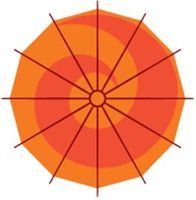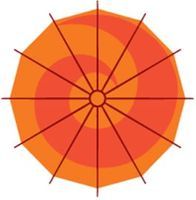Information
-
Document No.
-
Audit Title
-
Client / Site
-
Conducted on
-
Prepared by
-
Location
-
Personnel
1. Record Review
-
1.1 Inspection records created since the last inspection have been reviewed for completeness and correction of issues.
2. Housekeeping
-
2.1 All exits, passageways and corridors are clearly marked, illuminated and clear of obstructions and slip or trip hazards.
-
2.2 All areas are clean, organized and uncluttered with waste stored in the appropriate bin.
3. Working/Walking Surfaces
-
3.1 All pits, balconies and overhead areas are equipped with the proper guardrails and toe boards.
-
3.2 All stairs supplied with required handrails.
4. Emergency Equipment
-
4.1 The emergency Equipment Inspection Report (RM-OCC-004 F2) is completed and up to date.
-
4.2 Clear and easy access to each fire extinguisher, fire hose, pull station and air horn exits.
-
4.3 Location of emergency equipment is identified for quick access.
-
4.4 Spill response equipment has been inventoried and checked within<br>the last month.
5. First Aid Equipment
-
5.1 Required first aid supplies are stocked and readily available.
-
5.2 Location of first aid and eye wash supplies is properly identified<br>with clear & easy access.
-
5.3 Eyewash bottles are clean, full, and have not expired.
-
5.4 Permanent emergency showers & eyewash stations are clean and have<br>been inspected weekly.
-
5.5 Portable eyewash stations have been inspected monthly.
6. Hazardous Materials Control
-
6.1 All propane (LPG) containers are properly stored & labeled.
-
6.2 Approved flammable storage cabinets are used where required, with<br>no combustible material inside (no cardboard, boxes or paper).
-
6.3 All compressed gas cylinders are chained in the upright position<br>with cap guards on when not in use.
-
6.4 All hazardous materials are clearly labeled with the name, hazards<br>and precautions.
7. Storage Racking
-
7.1 All racks are maintained in a safe & stable condition.
-
7.2 The weight limits (max. load limits) are clearly stenciled on each<br>arm or shelf.
-
7.3 All pallets located above 6 feet in height will have items<br>physically secured to the pallet.
-
7.4 Racks have not exceeded the maximum load limits.
8. Portable Ladders, Platforms & Personnel Baskets
-
8.1 All equipment shall be maintained in proper working order.
-
8.2 Damaged or defective equipment shall be tagged and removed from<br>service.
9. Powered Industrial Trucks
-
9.1 Daily inspections are completed and maintained properly with any<br>deficiencies noted.
-
9.2 All operators are following the safe operating procedures (speed<br>limit, seat belt, etc.)
10. Crane & Rigging
-
10.1 Inspections (weekly or monthly) are completed and up to date.
-
10.2 Annual inspections are completed and up to date.
-
10.3 All operators are following the safe operating procedures.
-
10.4 The rated capacities of all cranes are clearly visible.
11. Machine Guarding
-
11.1 Installed guards are being used properly.
-
11.2 Guards have not been removed, tampered with or modified.
-
11.3 Equipment door or access panel safety interlock switches are<br>functioning properly. (Check with the operator & have the switch<br>tested.)
12. Lockout/Tagout (LOTO)
-
12.1 Are LOTO tags filled in correctly?
-
12.2 Is there a proper locking device attached?
13. Welding
-
13.1 Welding operations have the appropriate ventilation & welding<br>screens.
-
13.2 Is the appropriate welding PPE being used?
14. Personal Protective Equipment (PPE)
-
14.1 Is the correct PPE being worn by all personnel?
-
14.2 If not wearing the correct PPE, is a supervisor or manager within<br>20' of the employee?
-
14.3 Is the required PPE for visitors readily available?
15. Tools (Power, Air or Hand)
-
15.1 Power cords are in good working order.
-
15.2 Guards on grinders have not been removed, tampered with or modified.
-
15.3 Defective tools are placed out of service.
16. Electrical
-
16.1 Panels have clear access with a 3' exclusion zone & panel door<br>closed.
-
16.2 Power strips/extension cords are not daisy chained.
-
16.3 There are no exposed electrical leads/wires.
-
16.4 Extension cords are not being used for permanent power.













